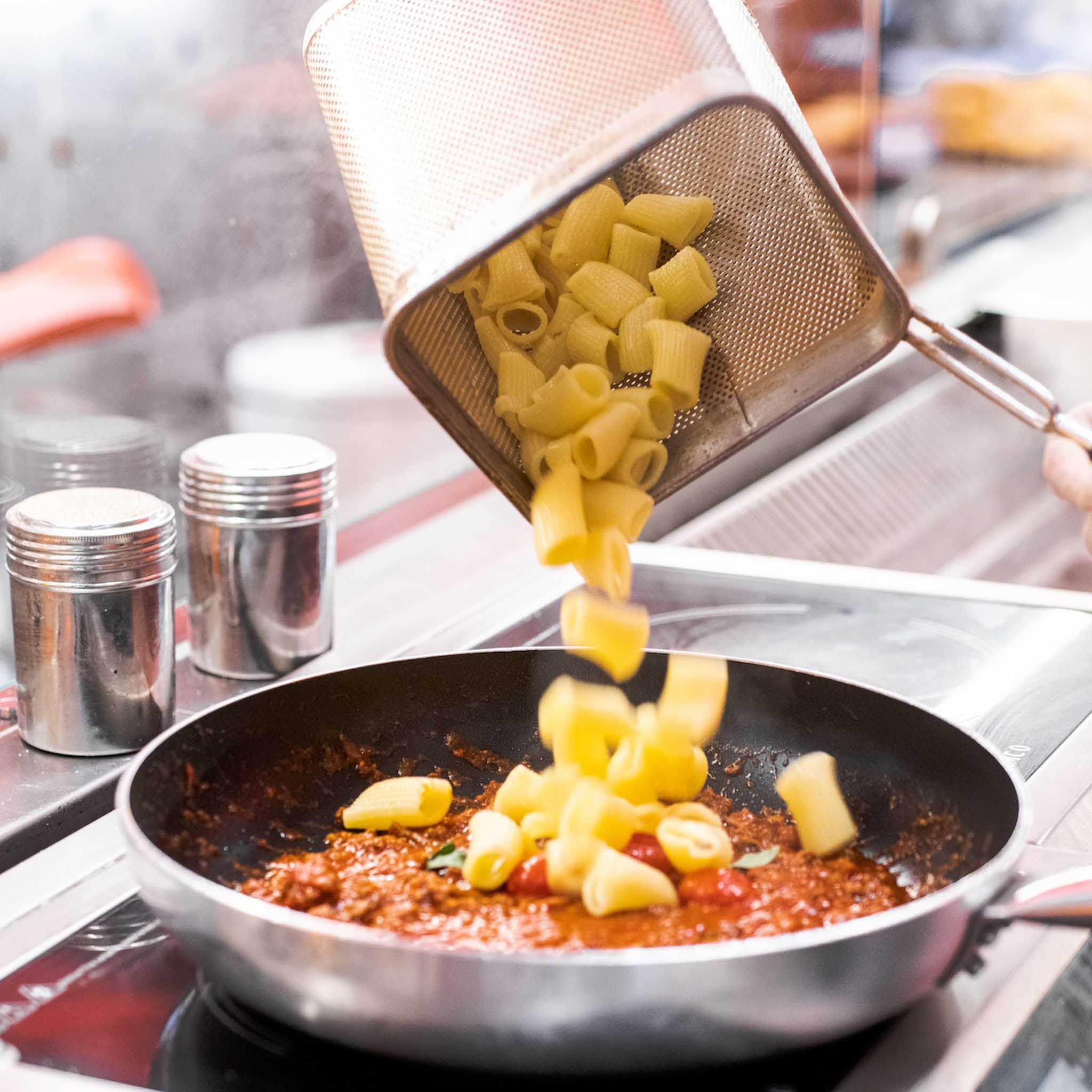Holy Pasta – Manifesto Market Anděl, A Menu That Celebrates Pasta in All Its Glory
As you digs through various sources for just how many pasta shapes come in existence, it quickly becomes clear how the number could easily rank near 1,000 when different cultures with variations incorporating enriched flour, rice, gluten-free ingredients, wheat grains, etc. are viewed.
In Italy, specifically, the count sits around 350, with each featuring unique contours, ridges, diameters and lengths-characteristics that lend themselves to precise sauce applications, all enjoyed by pasta lovers hailing from various corners of the flavor and texture spectrum.

More than sauce, it’s pasta that’s inextricably connected to Italy. Produced from simple, humble ingredients-typically flour, eggs, salt and water-the result is pure food alchemy. Those four components come together to spin golden bands and bits that become the building blocks for the dizzying level of meals, carrying the extra weight of sauces, meats, and cheeses, sometimes all at one time.
How pasta first arrived at this culinary epicenter as well as many regions may be the subject of endless debate, with a lot of recalling the grade school lesson involving Marco Polo with his fantastic travels towards the Asia. That tale states the famed explorer took noodles back to Venice following a harrowing visit to China, and also the newfangled food became increasingly popular, sweeping across Italy. This perfectly could be true, but other theories posit that pasta had been close to the country a long time before Polo’s voyage east.
Classifying Pasta
The roughly 350 several types of pasta can be broadly sorted into four categories:
Long: Tagliatelle, linguine, angel hair, fettuccine, capellini, etc.
Short: Cavatappi, conchiglie, festoni, farfalle, fusilli, gnocchi, etc.
Soup: Anelli, ditali, orzo, etc.
Stuffed: Cannelloni, angoletti, ravioli, tortellini, sacchetti, etc.
Some pasta shapes might be sorted into multiple categories, and variations in shapes and regional practices mean there’s plenty of overlap. Really, all of these pasta shapes exist since they elevate individual sauces and dishes using their unique textures. In Italian cooking, how an pasta supports the sauce is crucial. A thick, flavorful sauce uses a pasta that’s just as robust, with deep grooves for holding the sauce. A more delicate sauce pairs well using a thin, ribbon-like pasta.
It’s not only texture – flavors has to be considered in picking the right pasta. A chef will always consider how a sauce will “cling” on the pasta, and also the dish overall. Soup and stuffed dishes necessitate specific types of pasta, but again, there are numerous options in those categories.
Holy Pasta – Manifesto Market Andel
Ordering from Holy Pasta is a lot like joining a live cooking show. Choose from 3 pasta types, 7 toppings, and 16 unique sauces, and observe it being prepared fresh, before your vision. These dishes are crafted experiences and a hallmark to Italian cuisine’s quality and creativity. Making the best of four food categories to pick from (meat, vegetarian, fish, and fitness), and ensuring there is something for everyone’s taste.
More info about pasta recipes check out this internet page